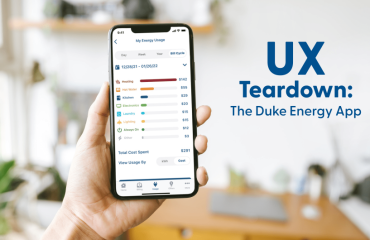The most effective apps are those that solve real problems for real people. To create software people want to use, it’s critical to prioritize their needs and behaviors right from the start – before writing a single line of code.
This holds true even for business process apps. When executives sit down to make decisions about how their software should look and behave, the focus can easily drift away from the end user.
Making matters worse, in large organizations, designers and developers are often far removed from the actual people who will use the product they create. Without a user-focused design approach, you could end up building:
- Features that no one uses
- A product that requires extensive training and support
- Low adoption rates, or worse, adoption by force rather than enthusiasm
- Unhappy users and lost goodwill
You don’t want the project you’re championing to fail.
Ensuring success – and creating apps that people truly want to use – requires a genuine commitment to involving real users in the process.
Designing software people want to use, requires a commitment to involve real users in the process. Share on XThe Importance of Empathy in Software Design
To design software people actually want to use, your team needs to plan beyond just business needs.
It’s crucial to engage and empathize with those who will use the software. By focusing on their needs and daily challenges, you can design a solution that genuinely works for them.
What Not To Do: A Cautionary Tale
Imagine you’re the COO at a company with a large field team working outdoors, surveying construction sites.
Right now, they document their findings on paper forms and drop them off at the office at the end of each day. This creates challenges like:
- More staff needed to type hand-written notes into a digital database
- Issues with illegible handwriting
- Paper forms getting lost or damaged by the elements
- Delays when field employees can’t return to the office on time
To streamline this process, you suggest creating an app that lets your field team enter information digitally, instantly uploading it to your database and eliminating manual data entry.
The idea is approved, developers are hired, and they’re given a feature list to build.
Once the app is complete, teams are trained and instructed to use it.
But after a month, you discover that only 10% of the team is using it, and the office staff is now complaining about data errors in the digital forms. Some even want to scrap the app entirely.
What Went Wrong: Lessons from the Field
If your project team had involved the field team in the design process, they would have discovered some critical insights:
- Environmental Challenges: Working outdoors in freezing temperatures makes extensive typing on a smartphone difficult, just like it was with paper forms.
- Visibility Issues: Glare from the sun on a smartphone screen can make it hard to see, so high contrast design would be essential.
- Time Constraints: Field workers often feel rushed and need a tool that doesn’t slow them down. If the app feels is cumbersome, they may revert to pencil and paper.
- Device and Data Constraints: Since the app would be used on personal phones, it could easily eat up limited data plans, especially if it involves uploading photos or using GPS.
- Connectivity Issues: Field employees are often in remote areas with unreliable internet, so offline access is a must.
With these insights, your team could design an app that meets real-world needs, resulting in:
- Smart Data Entry: Removing or auto-filling five data fields to save time and reduce errors.
- Outdoor Testing: Conducting tests outside to ensure visibility and ease of use.
- Offline Access: Enabling offline functionality to accommodate poor connectivity.
- Device-Specific Solutions: Providing tablets or shared devices with larger screens, reducing the strain on personal phones and data plans.
How to Design Software People Want to Use
From this real-world example, it’s clear that skipping user involvement can lead to poor adoption, missing or unnecessary features, and costly do-overs.
By involving real users in the design process, you avoid these pitfalls.
Here are 4 key principles for designing software that people want to use.
- Involve Users Early: Include real users in the design process to gain insights into their day-to-day challenges.
- Empathize with User Environments: Consider where and how users will engage with your software. Field testing in real-world conditions can reveal critical design flaws.
- Keep it Simple: Make sure your app is intuitive and doesn’t introduce more complexity than it solves.
- Test and Iterate: Gather feedback from users and continuously improve the app through regular testing and adjustments.
- Design your software with accessibility and inclusion in mind: read more about accessible software design
Designing software that people truly want to use starts with empathy and user involvement. By taking these steps you can create a product that not only meets business goals, but also drives user satisfaction and adoption.
At Big Fish, we help you navigate this process to ensure your software succeeds from day one. If your company is considering custom app development, please reach out to our team to request a no-charge discovery call.






